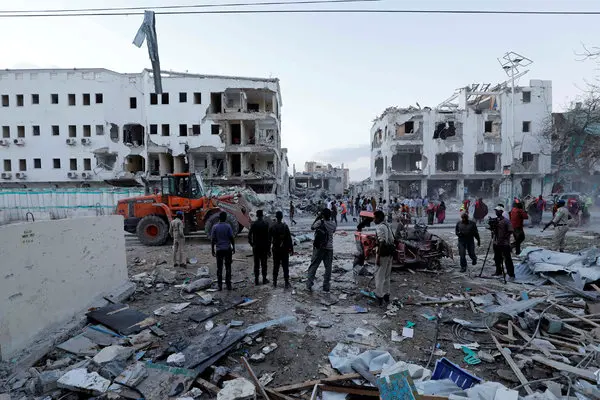Facebook Twitter (X) Instagram Somali Magazine - People's Magazine
Mogadishu, Somalia – Ending “forever wars” was one of Donald Trump’s key campaign promises during the 2024 US presidential election. But just 10 days after returning to office, Trump ordered air strikes in Somalia targeting leaders of ISIL (ISIS). This marked the beginning of an aggressive military campaign overseas, including attacks in Yemen, Iran, and support for Israel’s actions in Gaza and the wider Middle East.
In Somalia, US air strikes have more than doubled in 2025, with at least 43 strikes reported so far, mostly targeting ISIL fighters in Puntland and al-Shabab militants elsewhere. These attacks are being carried out by the US Africa Command (AFRICOM) in coordination with Somalia’s federal government.
US officials believe ISIL’s presence in Somalia is growing and now plays a key role in funding and coordinating activities for other ISIL branches worldwide. At the same time, al-Shabab has made dangerous advances, reclaiming territory and even reaching roads near Mogadishu, the Somali capital.
This rising threat has pushed the US to step up its strikes. But experts say this approach is nothing new — and history shows it hasn’t worked.
A History of US Failures in Somalia
US involvement in Somalia has a troubled past. The 1993 “Black Hawk Down” incident, where 18 US soldiers and hundreds of Somalis died, led to years of hesitation. But after the 9/11 attacks, Somalia became part of the US’s wider “War on Terror,” and air strikes resumed.
During Trump’s first term, the US carried out a record-breaking 219 air strikes in Somalia — far more than under any previous president. Analysts say Trump views Somalia as a place where the US can project power with few political risks: using high-tech weapons without needing to send many troops.
By removing restrictions placed by previous presidents, Trump made it easier to carry out drone strikes with less oversight. Some in his administration wanted to focus more on rivals like China, but others pushed for more direct military action in places like Somalia and Yemen.
Why More Bombs Might Not Work
Experts say these strikes are partly a response to al-Shabab’s recent military gains, but they argue that drone attacks alone won’t stop armed groups like al-Shabab or ISIL. Instead, such actions often make things worse by killing civilians, destroying homes and livestock, and pushing angry survivors into the arms of militant groups. fighters,” he says.
fighters,” he says.
Human rights groups have raised concerns for years. During Trump’s first term, reports of civilian deaths from US strikes were common. In 2019, Amnesty International even accused the US of committing possible war crimes. But victims were never compensated, and there has been little accountability.
Eva Buzo, head of Victims Advocacy International, says the US talks about protecting civilians but avoids real responsibility. “It’s not enough to admit mistakes,” she says. “There needs to be real communication and support for affected communities.”
What’s the End Goal?
Many experts believe the US is not trying to completely destroy al-Shabab or ISIL in Somalia but simply to contain them and weaken their operations. But without helping Somalia build stronger governance, peace, and local trust, air strikes may only worsen the problem.
As Jethro Norman of the Danish Institute for International Studies puts it: “Drone strikes can suppress violence, but they don’t solve the root causes. Without investing in local partnerships and reconciliation, these groups will continue to thrive.”
In the end, continued bombings may help the US claim military victories, but they risk feeding the very problem they aim to fix.

